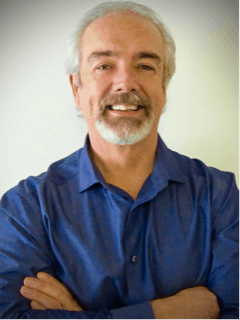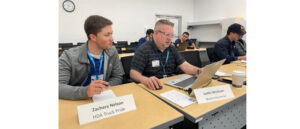Did the tech find the work and then the advisor sold it or, did the advisor sell it and the tech confirmed it? The answer should be “yes”
In part one we talked about overall motivations and in part two we looked at a few major technician wages and mindsets.
Today we will look into pay plan incentives from a team perspective.

Which came first? The chicken or the egg? Who gets credit for the sale? Did the tech find the work and then the advisor sold it or, did the advisor sell it and the tech confirmed it? The answer should be “yes.” There will be times where the tech needs to diagnose or inspect a condition on a vehicle and then it’s sold.
There will be — and most shops miss this — an advisor inspection of vehicle’s history and it is sold based on TIME and MILEAGE before the tech even looks the vehicle over.
This is a team working together to ensure Mr. and Mrs. Jones have the safest, most dependable, longest-lasting, lowest-costing, peace-of-mind means of transportation possible.
We have talked about tech wages, and to ensure your pay makes sense to your techs you need to have an in-depth forecasting and budgeting session completed. It is even more imperative to have this forecasting processes done when considering a service advisor inspective plan and then a team plan.
“So who is responsible for technician productivity? Technician efficiency? Technician or advisor? It’s both.”
— Dave Schedin
The next article will dive deep into advisor pay plans, but for the moment, let’s say we have well-constructed technician and advisor pay plans in place that drive livelihood and profitability for everyone. With that understood, how can we enhance individual plans with a lucrative team plan to keep away from a “what’s in it for me only” self-centered scarcity mindset.
Let’s look at a technician’s metrics first. Technicians are typically measured on volume first and can be described in sold or billed hours, labor and parts sold, car count, services completed, etc., in producing volume. Two terms are typically used to quantify a techs performance: productivity and efficiency.
So we are on the same page, here are the definitions used widely in the industry: productivity is the “actual” TIME a tech is productively working on vehicles versus available time, i.e. the industry benchmark of 90 percent productive means that for 8 hours the tech is there, they are working on vehicles 7.2 hours.
Efficiency is the percent indicator of how fast the job was processed. The industry benchmark for a technician is 150 percent efficiency. The full math for 90 percent productivity and 150 percent efficiency is: 8 available hours x 90 percent productivity = 7.2 actual hours x 150 percent efficiency = 10.8 sold hours.
So who is responsible for technician productivity? Technician efficiency? Technician or advisor? It’s both. If your “A” level tech does a job in 115 percent efficiency, and normally they are at 150 percent or more, there is a good chance the job was undersold. Here is a “Coach Daveism”: until you give your techs an average hours per RO of 2.8-3.0, you can not tell true tech inefficiency. You have to give them something they are not punching on and off an average of every 1.5-2.0 hours.
Did the advisor drive profitability beyond just checking gross profit, GP, dollars and percentages? There are three ways a repair order (RO) is profitable:
- Size: hours per RO (the average vehicles will give you 3.5 – 4.5 hours per RO)
- GP dollars and percents
- Tech efficiency
You’re not truly profitable, before expenses, until you are profitable at all three ways of an RO. If you are not profitable before expenses, chances are you won’t be profitable, or at maximum profitability, after expenses.
So, enter the team perspective. Now your advisor’s individual incentive plan carries some incentive for the advisor to “sell” it right and to be profitable at all three levels, as well as staging the work so a tech’s productivity is maximized. Again, deeper forecasting needs to be done to dial in what that means in your shop. The other side of the forecasting and incentive plan creation can be growing another $50,000 to $100,000 in new GP dollars in a 12-month period, and then maintain the new levels and not just have it be a spike.
Make it fun. Your incentive plan should not run stale. Keep a variable element involved. Here is a list of fun variables I have seen work well. The levels may need to be changed based on your models and timeline of GP dollar volume.
- Implement a team bonus if the lowest tech efficiency rises in a month/quarter by 10 pecent, 15 percent or 20 percent. The whole team gets the bonus only WHEN the lowest tech efficiency hits the goal. It’s easy to peak one month, so a quarter goal can make more sense
- Advisor hours per RO can increase by .5-1.0 over a month/quarter. The additional labor needed on most jobs that are forgotten should be called by techs. With most advisors, if you say it needs it, the advisor can sell it. Don’t mention it and you have 100 percent NO from your customer. Mention it, and if your advisor has a 50 percent closing ratio now you have a 50 percent chance to sell it and get paid for what you’re worth — and have a better final product you give back to your customer.
- As a team, there is a forecasted sold/billed hours to be sold each month (advisors sell it and techs produce it). When the team hits it, there is a team bonus split up among the team.
- If the team produces a certain level of GP dollars by Nov. 30, for the year, then all employees get one to three days of extra holiday time off with pay.
- If you need cash flow the very next week due to payroll or vender bills, then calculate what that is and add $100 – $200 to the goal and buy everyone a nice Friday lunch.
- Calculate GP volume prior to a three-day weekend and what would be needed to give all employees an extra day off with pay. Build it into the GP goal so you only pay it when it’s met.
- Figure out what shutting the shop down and taking all employees to a major training event and if GP volume is met, then the whole team goes all expenses paid.
We have just touched the tip of the iceberg of team bonuses and how much fun you can have. All pay plans need to have the ROI calculated so you can monitor it. Make sure it gets you where you want to go and only pay when you get there.
Just because a pay plan works well in one shop doesn’t mean it will work well in another. Take time to think it through and get input and coaching before you implement to ensure you don’t go broke or you present an incentive plan that makes you look “cheap.” You are a professional and your incentive and pay plans should also be on the professional level. You are not alone. Hire a coach!
————————————————————
Next from Coach Dave in the Enhanced Incentive Plan Series: Part 4 – Service Advisor & Manager Pay Plans. The first five who forward this “Aftermarket Matters Weekly” to another shop BEFORE July 31 and cc’ Coach Dave (copy and paste the email below) will receive a Level One Shop Evaluation including your current incentive plan review.
Dave Schedin can be reached at 800-385-0724, dave@computreksystems.com, and www.computreksystems.com. A complimentary 30-minute discussion is available for the asking.





Comments are closed.